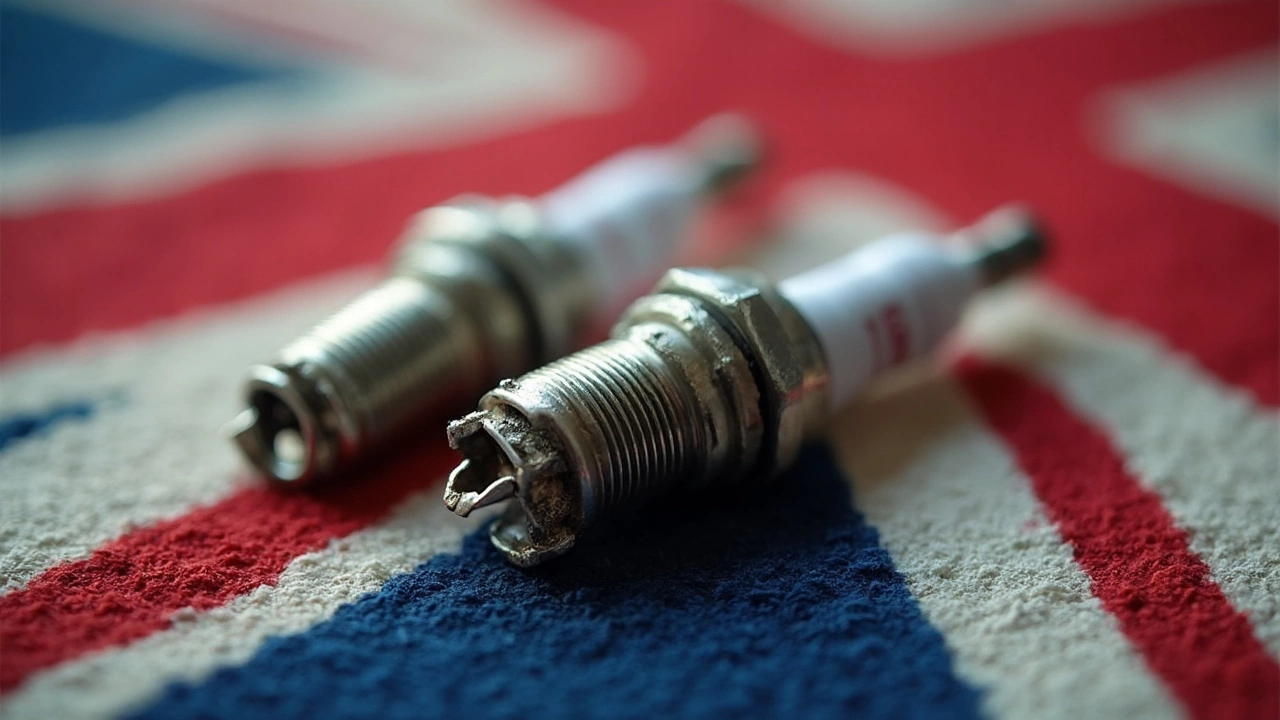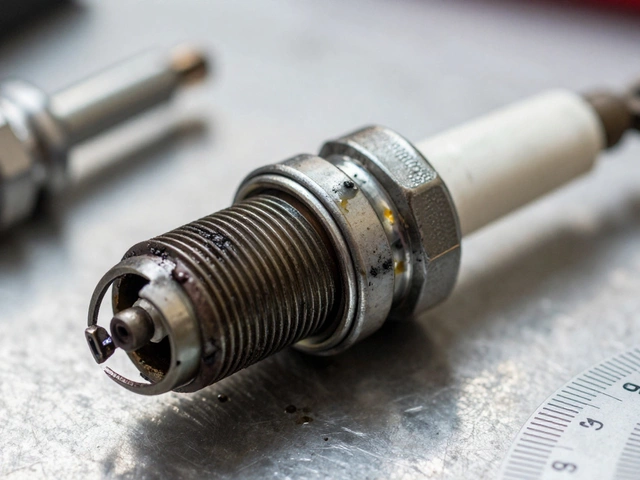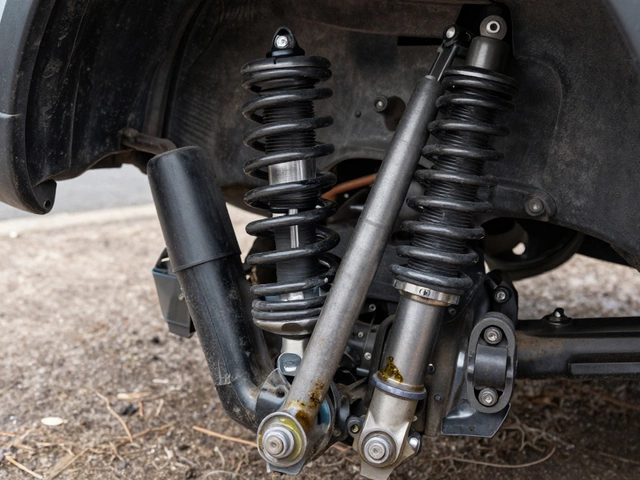Ever sit in your car, turn the key, and hear that sluggish cough instead of a smooth start? That could be your spark plugs crying for help. Most folks don’t think about these little parts until something goes wrong, but they’re the heartbeat of your engine—firing up that air/fuel mix and keeping everything purring.
Push off changing them for too long and things start to snowball. Your engine might struggle, your gas mileage tanks, and you’ll probably feel your car losing that pep it used to have when you hit the gas. Worst case? It might refuse to start at all, leaving you stranded when you least expect it.
The wild part is, a single worn-out spark plug can mess up everything—from your morning commute to your wallet. Knowing what can go wrong makes it way easier to spot trouble before it gets expensive. Let’s break down why ignoring spark plugs is asking for problems and how you can dodge some major hassles.
- Why Spark Plugs Matter
- Common Warning Signs
- What Can Go Wrong With Old Plugs
- How Engine Damage Starts
- Money You Could Waste
- When and How to Change Them
Why Spark Plugs Matter
It’s easy to forget about spark plugs since they’re hidden deep in your engine. But honestly, if your plugs aren’t working right, your whole engine suffers. These tiny parts are responsible for igniting the mixture of air and fuel inside the cylinders. No spark, no power—simple as that.
The second your spark plugs get worn out or too dirty, you get a weak spark. This means incomplete combustion, which makes your engine work harder and waste more gas. Bad plugs can drop your fuel economy by up to 30%. That extra trip to the pump each month? You can probably thank tired spark plugs for that.
There’s data to back it up. According to the National Institute for Automotive Service Excellence, “Worn or dirty spark plugs can cause engines to misfire and lose power, burn extra fuel, and even damage expensive components over time.”
"The simple act of replacing spark plugs at the intervals recommended by your vehicle’s manufacturer can make a noticeable difference in performance and reliability." – Car Care Council
Check out how the quality of your spark plugs affects different parts of your drive:
- Engine trouble: Bad plugs lead to rough starts and poor acceleration.
- Maintenance headaches: Ignoring spark plug changes can fry ignition coils and stress out your catalytic converter, which isn’t cheap to fix.
- Emissions: Worn out spark plugs usually mean higher emissions—real bad news if your state does yearly testing.
If you notice your engine shaking, or the check engine light pops on, spark plugs are one of the first things to check. They play way more of a role in your car’s health than most drivers realize.
Common Warning Signs
So how do you tell when your spark plugs are giving up on you? Trust me, your car has ways of letting you know. You just have to pay attention to the signals.
- Rough starts: If your car sounds like it’s struggling or just won’t turn over smoothly, old or worn spark plugs are a common culprit.
- Engine misfires: Ever feel your car shake or jerk when you’re driving or idling? That’s sometimes a misfire, which means the fuel isn’t lighting up properly. Blame those tired spark plugs.
- Poor acceleration: Hitting the gas and not getting the quick response you’re used to? Sluggish acceleration can be a big sign your spark plugs aren’t sparking right.
- Bad fuel economy: Keep finding yourself at the pump more than usual? Old spark plugs make your engine work harder, burning more fuel for the same trip.
- Check engine light: This little light isn’t always a disaster, but it often comes on when the engine senses repeated misfires. It’s a nudge to check those plugs.
A 2023 survey among mechanics found that bad spark plugs caused 27% of no-start issues in older cars. That number surprised me, honestly. It’s not just a minor thing—bad plugs add way more stress to your starter and battery over time.
Bottom line: If you notice a couple of these warning signs at the same time, don’t shrug it off. That hesitation or extra gas stop is trying to get your attention. Catch the problem early, and you’ll dodge a much bigger headache down the road.
What Can Go Wrong With Old Plugs
When you let your spark plugs get old, things start going downhill. They don’t just magically stop working—they get dirty, the gap wears out, or the tip gets burned away. This messes with the basic job they do, which is setting off the power in your engine with every turn of the key.
You’re bound to feel the effects if you ignore them. Here’s what can go wrong because of worn spark plugs:
- Poor fuel economy – A typical set of bad plugs can lower your gas mileage by up to 30%. That’s like throwing money right out the tailpipe.
- Engine misfires – Your car might jerk or sound rough, especially if you’re stuck in traffic or hauling up a hill.
- Slow or rough starts – You turn the key and it doesn’t want to wake up, or the engine shudders for a few seconds before settling in.
- Lack of power – It just won’t accelerate the way it used to. That’s because a misfiring plug kills your engine’s performance.
- Higher emissions – Worn plugs can make your ride fail a smog check, and that means you’re pumping more junk into the air than you should.
- Check engine light – This one’s a classic. A bad spark plug will often trigger the light, and your mechanic will likely see a misfire code when scanning the car’s computer.
To put it into perspective, here’s a quick look at how old plugs can affect your car compared to fresh ones:
| Plug Condition | Fuel Economy | Engine Power | Emissions |
|---|---|---|---|
| New | Optimal | Full Performance | Normal |
| Worn | ↓ up to 30% | ↓ Noticeable Drop | ↑ |
As the folks at Car and Driver point out,
"Changing spark plugs is one of the simplest yet most effective maintenance jobs. Ignoring them leads to bigger problems that cost way more than a set of new plugs."
Long story short: if you want to keep your engine happy and your wallet thicker, don’t let your spark plugs wear out unnoticed.

How Engine Damage Starts
Ignoring spark plugs doesn’t just make your car run rough—it can lead to some pretty ugly engine problems over time. Here’s what’s actually happening behind the scenes: when a spark plug gets worn out, it can’t create that clean, quick spark your engine needs. Combustion doesn’t happen right, or happens too late, and your engine has to work overtime. This wears down other parts fast.
Every time a plug misfires, raw fuel gets dumped into your exhaust. That’s bad news for your catalytic converter—which really doesn’t like extra fuel. In a lot of cases, this can clog or overheat the converter, sometimes to the point where it needs to be replaced. We’re talking about a repair that can easily cost hundreds of dollars, all because of a $5 part.
- Rough engine idling
- Engine knocking or pinging
- Loss of power during acceleration
- Hard starts (or no start at all)
Sticky, old plugs can also mess with your fuel economy. Some people see up to a 30% drop in miles per gallon because their engine isn’t firing the way it should. Think about it: over a year, all that wasted fuel adds up. And it’s not just your wallet hurting—your engine oil can get contaminated, leading to more wear and tear on pistons and cylinder walls.
Check out this quick breakdown of what can go wrong when you skip regular car maintenance on your spark plugs:
| Problem | Consequence |
|---|---|
| Misfiring plugs | Engine shakes, loss of power |
| Raw fuel in exhaust | Catalytic converter damage |
| Incomplete combustion | Poor fuel economy, more emissions |
| Excess engine strain | Internal engine damage, costly repairs |
If you let this stuff go too long, you might even face full-blown engine failure. Trust me—you don’t want to be looking at that repair bill. Staying on top of your spark plug changes is one of the easiest ways to keep your car (and your bank account) in good shape.
Money You Could Waste
Putting off changing your spark plugs might feel like you’re saving cash, but it actually chips away at your wallet over time. Old plugs mess with how your engine burns fuel, so you’ll visit the gas station more often. The Department of Energy says that bad spark plugs can drop your fuel economy by as much as 30%. Imagine paying for an extra tank every month just because of some ignored plugs.
But it’s not just the pump draining your pockets. When spark plugs get tired and start to fail, they strain other parts of your car. Your ignition coils, for example, work harder to try to fire those weak plugs. If they burn out, replacing coils usually costs a couple hundred bucks on top of your spark plug bill. Plus, unburned fuel can gum up your catalytic converter, and now you’re looking at a repair that can sometimes cost more than $1,000—ouch.
Let’s lay it out with some real numbers:
| Issue Caused by Old Plugs | Average Cost |
|---|---|
| Poor fuel economy (extra fuel/year) | $100-$400 |
| Ignition coil replacement | $150-$400 per coil |
| Catalytic converter repair | $900-$2,500+ |
| Towing for breakdown | $75-$200 |
A set of quality plugs usually runs $30–$100 for most cars, plus some labor if you’re not the wrench-turning type. Compare that to the fixes above, and it makes way more sense to swap them out on schedule. Keeping up with this basic car maintenance can save a ton of hassle and real money down the line.
When and How to Change Them
If you’re wondering how often you should swap your spark plugs, it really depends on what your car’s manual says and what type of plugs you have. Older copper plugs usually last around 20,000 to 30,000 miles, while iridium or platinum plugs can sometimes go 60,000 to 100,000 miles. But honestly, don’t push your luck—checking them every 30,000 miles is safer, especially if you drive a lot in the city or tow heavy stuff.
Ignoring those numbers, hoping they’ll last forever? Not a good move. Your car maintenance schedule should have a clear spot for spark plugs since one bad plug brings the whole engine down. Even if you think, “Hey, my car feels fine,” these things can degrade quietly until suddenly your mileage tanks, or your engine misfires every few seconds.
Ready to take on the job yourself? It’s actually doable, even if you’re not car-obsessed. Here’s what you’ll usually need:
- Replacement plugs (double-check your owner’s manual for the right kind)
- Spark plug socket and ratchet
- Extension bar (sometimes plugs are set deep)
- Torque wrench (for getting them just snug enough but not overly tight)
- Gap gauge (for setting the gap if the new plugs aren’t pre-gapped)
The basic steps for changing spark plugs look like this:
- Make sure the car is cool. Hot engines burn!
- Unplug the battery—better safe than sorry.
- Remove the spark plug wire or ignition coil from the first plug.
- Use your spark plug socket and ratchet to take out the old plug.
- Check plug gaps if needed and adjust as per your manual.
- Screw in the new plug by hand first, then snug it up with the wrench.
- Repeat with the rest, reconnect everything, and double-check for loose wires or tools left behind.
Don’t rush. A cross-threaded spark plug can wreck the threads in your engine’s head—that’s a headache you don’t want. If all this feels intimidating or you have a modern engine with buried plugs, no shame in letting a mechanic handle it. Just make sure you don’t put off this basic bit of engine trouble prevention, or it’ll cost you more down the road.
| Type of Plug | Recommended Change Interval (Miles) |
|---|---|
| Copper | 20,000–30,000 |
| Platinum | 60,000–80,000 |
| Iridium | 80,000–100,000 |
Quick tip: Keep track of your spark plug swaps along with your oil change records. That way, you won't forget and end up driving with plugs so old they’re practically fossils.








